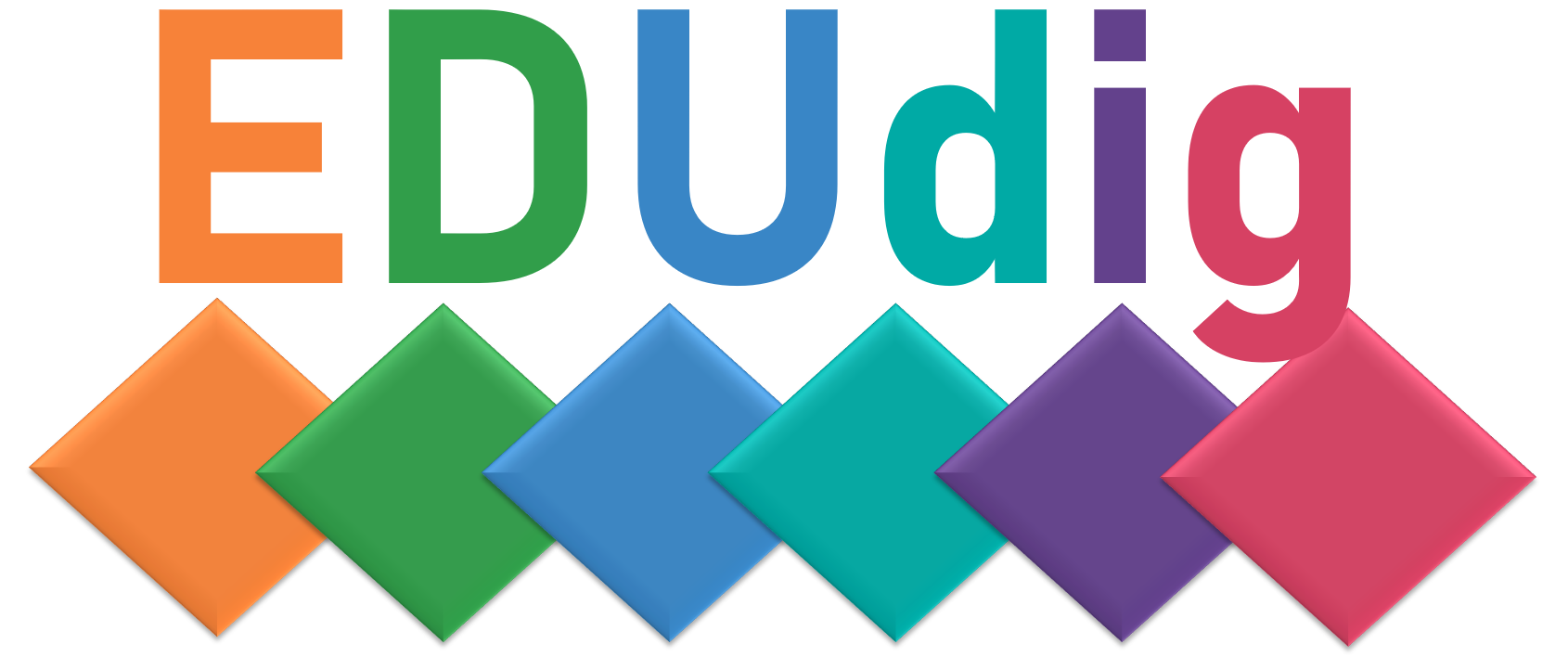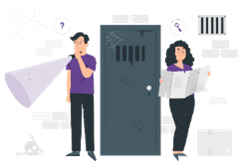Training
3.2.7 Implementation – digital escape room
The escape room is an engaging collaborative activity where the students have to solve a mission in order to finish the game. The game consists of a challenging story, formulated as a mission that students need to achieve in a short time. During the mission, they solve various clues and puzzles that lead them to the final cle which is the exit of the game.
This interesting, engaging, and collaborative activity can be used to introduce the new content, as an activity for reflection on the previously received input, or the assessment of knowledge or skills. The intention of the activity is to increase motivation, improve learning and develop collaboration [8].
Implementing a digital escape room, the following planning steps need to be considered:
Choose the setting
You can play the escape room in a synchronous or asynchronous setting. Playing the escape room synchronously the educator introduces the game at the beginning of the meeting and divides the students into breakout rooms. In the asynchronous approach, the educator can introduce the game with a brief video and explain the mission and process.
Define the target group
Consider the prior knowledge, skills and experience of your participants when planning this activity. Depending on the level of experience you define the duration, the complexity and the mode (collaboration or competition) of the game.
Design the content of the game
Define the learning goals and purpose of the game. Consider what kind of knowledge or skills you want students to develop. It is also important to decide which role the game will play within your lectures. Choose whether to use it as an introductory activity, supporting measure or as an assessment tool.
Create puzzles
Puzzles (questions) and clues (answers) define the content framework of the digital escape room. Puzzles can be multiple-choice questions, crosswords, drag and drop, and many more. After solving the puzzle, as a result, the students receive a code. The codes are based on a short sequence of numbers and/or letters.
Depending on the design of the game, the codes are either a trigger for the next puzzle (sequential structure) or an element to fill in the meta-puzzle (open structure).
Write a background story
The escape room needs an exciting background story. The story must immerse players into the role of a detective or a rescuer that takes them through the whole mission during the game. The story with an exciting mission can be adapted to the content you are teaching.
Develop the game
There are a lot of different possibilities and environments to implement the escape room. Consider the following aspects:
- Shareable game environment – i.e. website
- Countdown time
- Images for puzzles
- Tools to create the puzzles – i.e. Google Forms
Test the game
Test the game with colleagues to check whether the game is too complex or simple.
Planning steps:
>>https://edudig.eu/wp-content/uploads/2022/12/Digital-escape-room-in-collaborative-learning.pdf
Video tutorial:
>>Google Slides Bitmoji Escape Room Tutorial – YouTube
Digital escape room:
>>https://edudig.eu/digital-escape-room/
Online quizzes:
>>https://edudig.eu/creating-game-based-activities/
Visual content:
>>https://edudig.eu/visual-content/
Learner-driven approaches:
Develop escape room jointly with the students
>>https://edudig.eu/learning-by-developing-lbd/
Extended reality – i.e. use virtual reality workspaces to implement the escape room:
>>https://edudig.eu/extended-reality/

